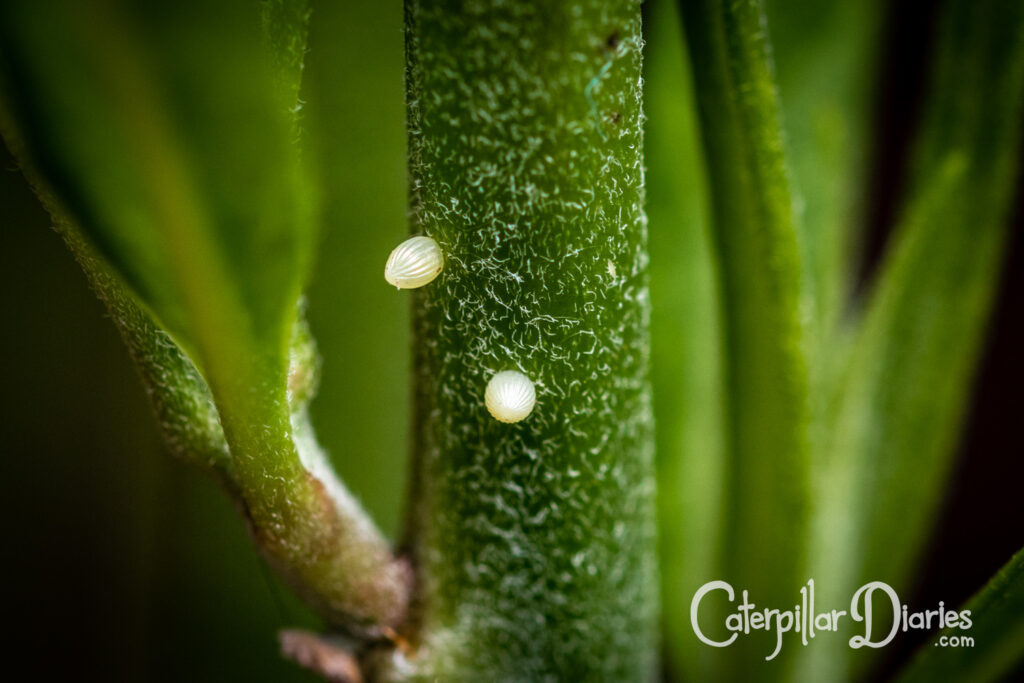
A monarch egg is creamy-white and tiny – about the size of the tip of a pencil. This makes the eggs hard to see on the plant, but you can find them if you look closely.
A tiny caterpillar grows inside the egg until it takes up all the space in the shell. In New Zealand (where we have a temperate climate), this takes about four to 10 days, depending on the weather. It takes less time over hot summer days, and more time in cooler weather.

When it is nearly ready to hatch, the egg appears to darken, especially at the top. This is because the caterpillar’s head turns black and its head can be seen through the transparent shell. The tiny caterpillar is scrunched up inside the egg.
